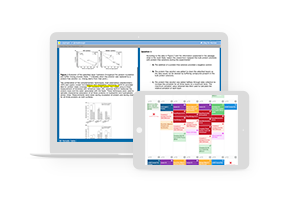Item 5
Prior to vaccinations for poliomyelitis, widespread polio infection created wards of patients at risk of death due to loss of control of respiratory muscles. In 1928, Drinker and Shaw invented the first “iron lung,” a device that sealed the patient’s body from the neck down in a chamber with controllable pressure. The pressure change in the “iron lung” aided respiration by:
a) increasing the positive pressure in the lungs, driving diffusion of O2.
b) increasing the positive pressure in the lungs, thereby increasing lung ATP utilization efficiency.
c) increasing negative pressure within the iron lung caused the patient’s lungs to expand.
d) delivering positive abdominal pressure driving the diaphragm .
Humans breathe with “negative pressure breathing.” The diaphragm contracts to increase the vertical dimension of the thoracic cavity, and the internal and external intercostal muscles expand the rib cage. With increased lung volume, air is passively drawn in to the lungs by the negative pressure. In roughly 1% of polio infections the virus enters the CNS, usually causing asymmetric paralysis of the limbs and less commonly affecting cranial nerves leading to respiratory difficulty. For the MCAT: remember “negative pressure breathing.”
a) increasing the positive pressure in the lungs, driving diffusion of O2, incorrect, The patient’s head and neck were outside the chamber of the “iron lung”, therefore the air pressure in the lungs was unaffected.
b) increasing the positive pressure in the lungs, thereby increasing lung ATP utilization efficiency, incorrect, See choice “a”, and pressure does not affect ATP utilization.
c) negative pressure within the “iron lung” causing the patient’s lungs to expand, correct.
d) positive abdominal pressure driving the diaphragm, incorrect, Although the diaphragm is involved in normal respiration, the “iron lung” works by mimicking the function of the intercostal muscles which expand the thoracic cavity, thereby increasing lung volume to pull in air. “Driving the diaphragm”, and “positive abdominal pressure”, are not part of the “iron lung” mechanism.
Search the Blog

Free Consultation
Interested in our Online MCAT Course, One-on-One MCAT Tutoring or Med admissions packages? Set up a free consultation with one of our experienced Senior Student Advisors.
Schedule NowPopular Posts
-
MCAT Blog What's on the MCAT?
-
MCAT Blog How to Review MCAT Full Lengths

Free MCAT Practice Account
Need great MCAT practice?Get the most representative MCAT practice possible when you sign up for our free MCAT Account, which includes a half-length diagnostic exam and one of our full-length MCAT practice exams.
Learn More







